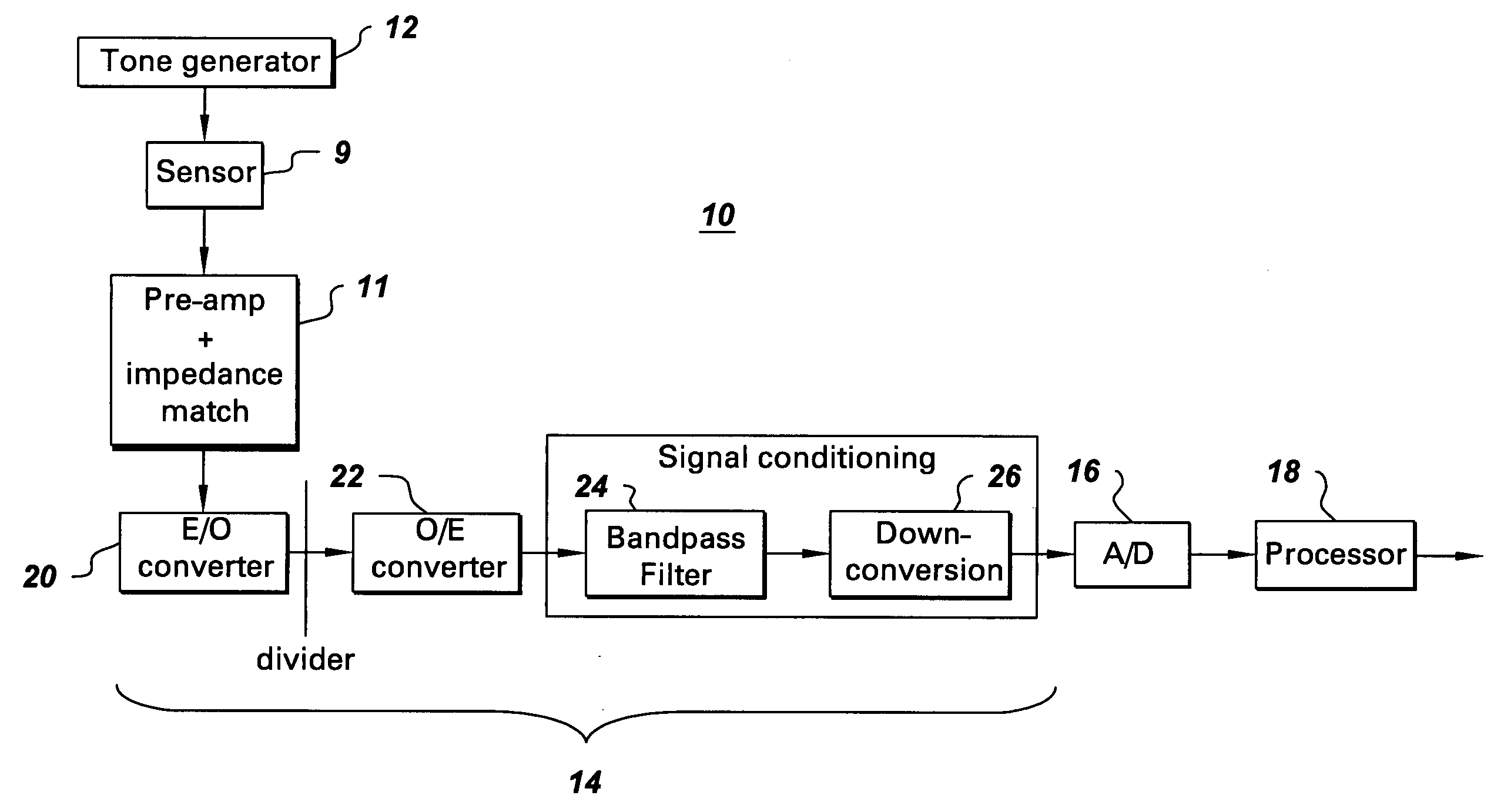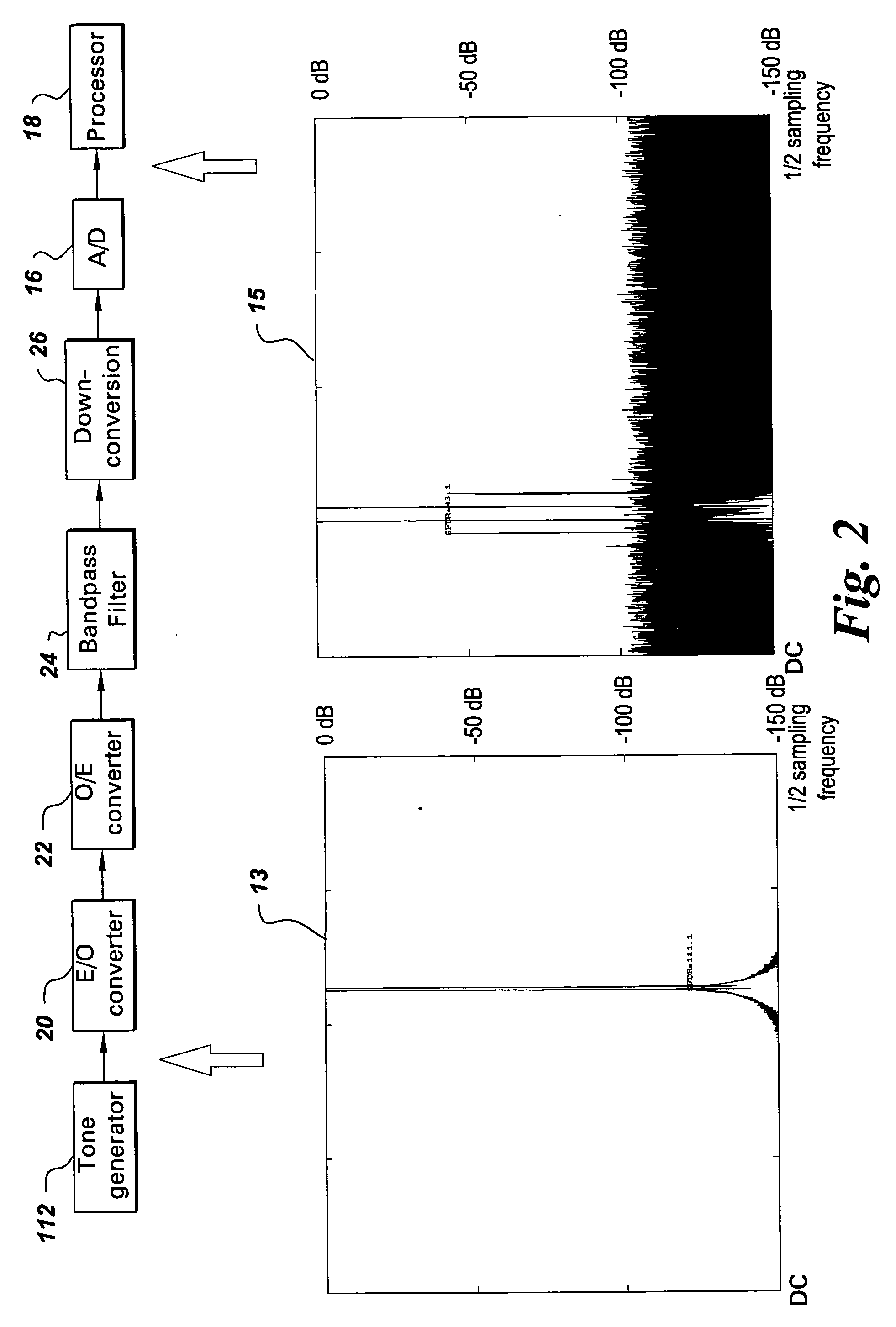Linearization system and method
a linearization system and linearization technology, applied in the field of linearization systems and methods of magnetic resonance imaging, can solve the problem that modulators are a significant contributor to nonlinearization
- Summary
- Abstract
- Description
- Claims
- Application Information
AI Technical Summary
Problems solved by technology
Method used
Image
Examples
Embodiment Construction
[0013]FIGS. 1 and 2 are block diagrams of linearization systems in accordance with several embodiments of the present invention. In these embodiments, linearization system 10 comprises: a tone generator 12 (FIG. 1) or 112 (FIG. 2) for providing at least two different RF tones, receiver path components 14 for processing the RF tones, an analog-to-digital converter 16 for converting the processed RF tones into digital signals, and a processor 18 for using the digital signals to train a linearization error compensation model prior to operational use of the linearization system. FIG. 1 additionally illustrates a sensor 9 and associated pre-amplification and impedance matching components 11 which would typically be present during operational use. Operational use is intended to mean use of the system in its operational mode. In one example wherein the linearization system comprises an imaging linearization system, operational use occurs when an object is being imaged. FIG. 2 additionally ...
PUM
 Login to View More
Login to View More Abstract
Description
Claims
Application Information
 Login to View More
Login to View More - R&D
- Intellectual Property
- Life Sciences
- Materials
- Tech Scout
- Unparalleled Data Quality
- Higher Quality Content
- 60% Fewer Hallucinations
Browse by: Latest US Patents, China's latest patents, Technical Efficacy Thesaurus, Application Domain, Technology Topic, Popular Technical Reports.
© 2025 PatSnap. All rights reserved.Legal|Privacy policy|Modern Slavery Act Transparency Statement|Sitemap|About US| Contact US: help@patsnap.com



